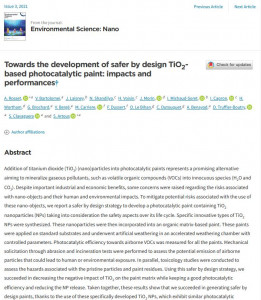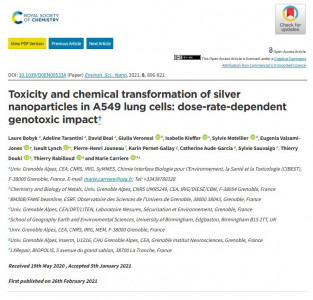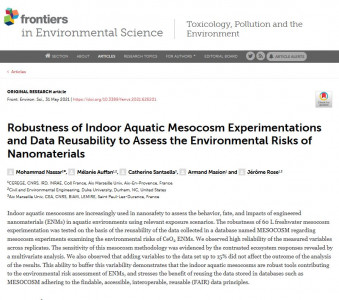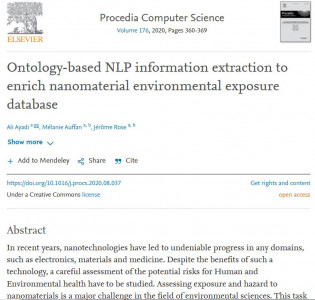Article on "Aquatic toxicity of transformed and product-released engineered nanomaterials: An overview of the current state of knowledge" by Lehutso, R. F., Tancu, Y., Maity, A., & Thwala, M. (2020)
Abstract:
The release of engineered nanomaterials (ENMs) into the environment is increasing at a rapid pace due to rising production and incorporation into a variety of consumer products, collectively referred to as nano-enabled products (NEPs). During the life cycle of the NEPs, ENMs can be released into aquatic environments. The ENMs released during the various life cycle stages are often not in their pristine form as they are transformed when they encounter physical, chemical and biological stressors. Upon release into the environment, it is highly likely that aquatic organisms would be exposed to these ENMs. The current review summarised recent literature on the toxicity effects of transformed ENMs and ENMs released from NEPs. The transformation processes of pristine ENMs, ENMs’ release from NEPs, and toxicity effects observations are discussed; the emphasis being on the toxic effects of non-pristine ENMs. The procedures used to transform pristine ENMs and release ENMs from NEPs can exert physicochemical alterations relative to the original state of the ENMs. Findings showed that significant uncertainty continues to exist on the toxicity of the non-pristine ENMs. The uncertainty can be attributed to a multitude of factors, more likely due to the lack of coordinated efforts and standardised testing protocols for transformation, release and toxicity that limit the availability of robust data on which solid risk assessments of ENMs can be based. Nonetheless, the literature herein indicated that the transformed ENMs tend to be relatively less toxic to aquatic biota compared to ENMs released from NEPs that are commonly associated with traces of the product matrix. The pronounced toxicity effects of ENMs released from NEPs is widely attributed to the: (i) ENMs, (ii) released product matrix, and (iii) dissolved ions, as such, the realistic risk assessment and environmental regulation of ENMs in isolation are thus hampered. The review ends by proposing various strategies that can be adopted to improve the data limitations that were identified.
https://doi.org/10.1016/j.psep.2020.03.002









